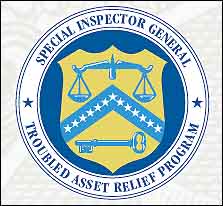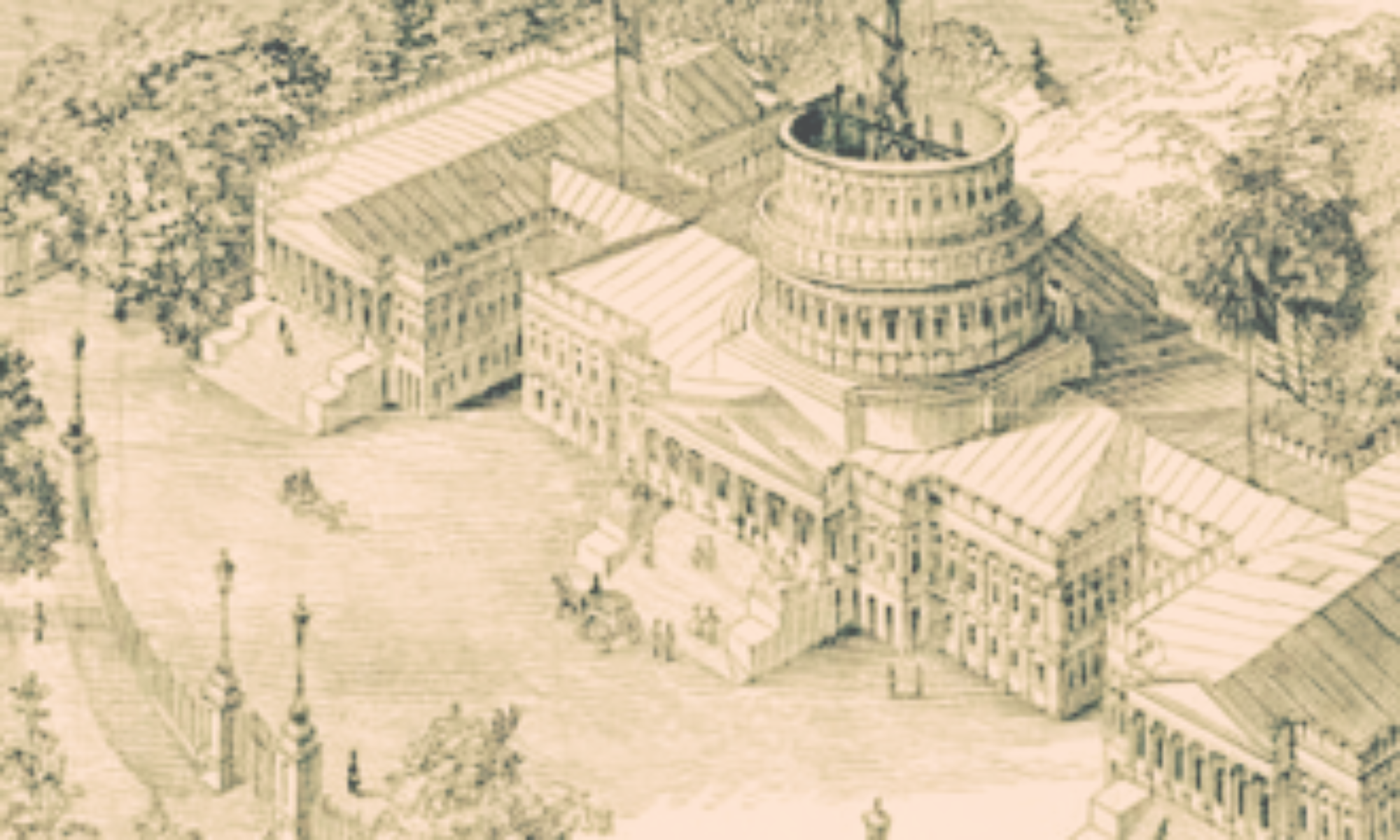
You might have missed it, buried as it was in the Economy and Business section in Wednesday’sWashington Post, but ten of the larger banks that had received “bailout” funds from the US government last fall are going to repay the money.
The ten financial institutions – including J.P. Morgan, Goldman Sachs, Morgan Stanley, American Express and Capital One – are going to repay $68 billion of the $200 billion made available to financial institutions last fall under the program known as TARP (Troubled Assets Relief Fund).1
More firms are preparing to do the same.
For tax payers and free market enthusiasts, this is nothing short of ground breaking news. Private firms, back on their feet, are repaying borrowed public monies and returning to the private sector to continue and, with hope, expand their commercial lending operations, contributing to economic recovery.
Shockingly, this is how the plan was suppose to work.
Importantly, and lost in the news stream static is that the bank repayment is concrete and tangible validation for the Bush administration and its leadership at one of the most critical and sensitive times in recent decades.
In contrast to its caricature as a government of bunglers that could not shoot straight after Katrina and the public turn against the Iraq war, the Administration’s handling of the financial crisis, particularly its origination and management of the TARP program, and the actions of the Federal Reserve, deserve recognition and praise.
But of course that is not the way it is being reported.
With slack-jawed irony, the Post’s Binyamin Appelbaum said that, “The decision [for the banks to repay] is a milestone for the Obama administration’s financial rescue plan.”
Yet the contrast between the Bush conception of TARP with Obama’s uniquely liberal, government-dominant plan deserves notice and substantial critique.
Just as important, the success of the TARP program holds important lessons for Republicans in adapting to the realities of the 21st century, and an understanding that bromides are no substitute for action when the national interest is at stake.
The History
Amid the new and settled reality of recession and unemployment, it can be hard to remember the sense of genuine crisis and uncertainty that gripped the country last fall.
The explosion of the sub-prime mortgage market coupled with Wall Street’s packaging of, and insufficient financial reserves against, risk in the mortgage industry, became the perfect storm for a catastrophic financial cascade that touched small American towns and foreign countries.
The results of the storm were unprecedented, with the global financial system itself on the verge of collapse.
Consider the epic events of September 2008:
September 7th: facing failure, the Federal government takes over Fannie Mae and Freddie Mac which owned or guaranteed $6 trillion US mortgages. The failure of Fannie and Freddie causes panic as investors worldwide owned $5.2 trillion of debt securities backed by the two. Mortgage lenders and Wall Street banks depended on Freddie and Fannie to facilitate the mortgage market.
September 14th: Merrill Lynch is sold to Bank of America as fears of a liquidity crisis mount.
September 15th: Lehman Brothers files for bankruptcy as it cannot meet its cash requirements.
September 16th: rating agencies downgrade AIG’s credit on concerns over continuing losses to mortgage-backed securities, creating fears of AIG insolvency.
September 17th: the Federal Reserve lends $85 billion to AIG to avoid bankruptcy.
September 25th: Washington Mutual is seized by the FDIC and its banking operations are sold to JP Morgan Chase.
Actions by the Administration were designed initially to contain the financial damage. But it rapidly became clear that credit markets were seizing up like a car without oil. Credit, Bernanke has said, is the mother’s milk of the modern economy. The tighter the credit, the worse the economy.
The Solution
With bank and financial institutions already over-leveraged, lending would stop, choking off credit to Main Street in the form of mortgages, business loans and consumer loans for cars and durable goods. Small businesses, in particular, need credit to operate.
Without credit, consumers don’t buy and producers can’t sell. Plants don’t need to produce and joblessness increases. The cascade of financial collapse creates an odious downward cycle of economic retrenchment. Something pro-active was required, but no crisis comes without context that dictates to some degree, what can be done.
For Bush as president, the crisis came at a time when, after bruising legislative battles with the Democratic majority in Congress, his popularity was sliding from the low 40s into the 30s. On the political clock, a presidential election was less than 70 days away, and Bush had to balance his responsibilities as president with the reality that the higher his profile, the more complicated became the campaign of Senator John McCain, the Republican nominee.
The opportunity to play politics with the crisis was manifold, and many on both sides of the aisle justified opportunism as principle, showing they were mere politicians at a time that required statesmanship. To do what is right, instead of what is easy, defines leadership and it defined Bush and his Administration during this crisis.
On September 24th, Bush went on national TV to respond to the crisis and spell out government action. Bush noted that,
“Financial assets related to home mortgages have lost value during the housing decline and the banks holding these assets have restricted credit. As a result, our entire economy is in danger. So I propose that the federal government reduce the risk posed by these troubled assets and supply urgently needed money so banks and other financial institutions can avoid collapse and resume lending. This rescue effort is not aimed at preserving any individual company or industry. It is aimed at preserving America’s overall economy.”
In squaring his action with his political principles and philosophy, Bush said,
I’m a strong believer in free enterprise, so my natural instinct is to oppose government intervention. I believe companies that make bad decisions should be allowed to go out of business. Under normal circumstances, I would have followed this course. But these are not normal circumstances. The market is not functioning properly. There has been a widespread loss of confidence, and major sectors of America’s financial system are at risk of shutting down.”
Proposing the $700 billion spending bill to bailout banks, Bush noted that as difficult as it was to use taxpayer money, he expected that most if not all of the money would eventually be paid back. He said that once the crisis was resolved, that a regulatory structure constructed in the 20th century should be modernized so that one company could grow so fast as to threaten the whole economy.
Public opinion on the bailout was visceral and heated. One poll taken before Bush’s address had the public opposing a bailout 55-31%.2 Investor Carl Ichan called the plan, “crazy and inflationary as hell.”3 On the day of Bush’s address 100 economists wrote to Secretary Paulson to express their great concern over the plan.4
The bailout bill came up for a vote in the House on September 29th. After a scorchingly partisan address by House Speaker Nancy Pelosi, who blamed the crisis squarely on the Bush administration, 133 Republicans, many of whom were already uncomfortable with the (then) exorbitant use of taxpayer monies joined 95 Democrats to kill the legislation.
The stock market suffered its single worst point lost in history after the vote, 777 points.
Cooler heads prevailed in the Senate where the bill was passed overwhelmingly on October 1st. Having taken better stock of the impact of their parochial votes in matters of national crisis, the House passed the Senate bill, 263-171 and President Bush signed the legislation the same day.
On October 14th, Bush and Paulson announced that instead of buying toxic assets in financial institutions – given the difficulty in their valuation – the government would invest directly in the banks to provide liquidity and take stock in return. On that basis, the Treasury Department eventually deployed $200 billion to distressed financial institutions to stabilize them.
Three weeks later, in what many saw as a referendum on the Bush administration and its stewardship of the economy, Barack Obama was elected President with 53% of the vote.
The Aftermath
As Bush prepared to exit office in January, he was attacked on all sides for his decision on the bailout. Democrats had excoriated the Administration blaming the financial crisis squarely on Bush’s policies (previous Duffy’s have already set the record straight on this). Bush’s public approval ratings, which normally improve for a sitting president after an election, continued to deteriorate. And with the scale of the Democratic victory on November 4th, Bush’s own Party went against him.
The Washington Times reported on December 30, 2008, that the Republican National Committee meeting in January would take up a resolution accusing Bush and Congressional Republicans of socialism. The sentiment was summed up by North Dakota Republican National Committeeman Curly Haugland, “Most of us strongly supported the Bush administration through the entire two terms, but in the last few months, this bailout, and the abandonment of capitalism sealed it.”5
The rebuke seemed universal, but a short six months later, Bush is on the cusp of vindication with banks repaying taxpayers as advertised.
Stuart Butler, a PhD at the conservative Heritage Foundation no less, said of the TARP program, “The main economic features of the package continue to be acceptable and likely to accomplish the goal of restoring functioning credit markets while providing reasonable taxpayer protections.”
Butler summed up the Bush position himself in stating, “When the basic functioning of a market is breaking down, with potentially disastrous consequences for the entire economy, there can be a case for government to help restore a functioning market.”
Far from “abandoning capitalism” as the RNC member saw it, Bush was an architect of its survival.
But there are Republicans and conservatives that still don’t get it, who lump the TARP money with the far more odious Obama stimulus and pending expansions for health care, education, et.al. This is self defeating and provides no path out of the woods for Republicans.
Bush’s leadership in a difficult political environment and an impossible economic environment are a testament to his commitment to the national interest, in a manner that was not inconsistent with his values or principles.
Consider the rest of Bush’s September 24th remarks,
“…they [Congress] must ensure that efforts to regulate Wall Street do not end up hampering our economy’s ability to grow….Despite corrections in the marketplace and instances of abuse, democratic capitalism is the best system ever devised. It has unleashed the talents and productivity and entrepreneurial spirit of our citizens. It has made this country the best place in the world to invest and do business. And it gives our economy the flexibility and resilience to absorb shocks, adjust and bounce back.”
The gaping distinction between Bush’s approach to the financial crisis and that of Obama today, who has used the economic downturn as a pretext to intervene maliciously in the functioning of the private market to assure arbitrary social outcomes, is startling.
Bush’s view was right and his solutions are working as advertised. Bush’s world view informed how the extraordinary is temporarily necessary to enable the greatness of America to continue. The new team has yet to figure that out.
1. Washington Post, June 10, 2008, A12
2. Bloomberg/LA Times Poll 9/19-22/08
3. Wikipedia
4. Ibid
5. Washington Post 1/28/09
